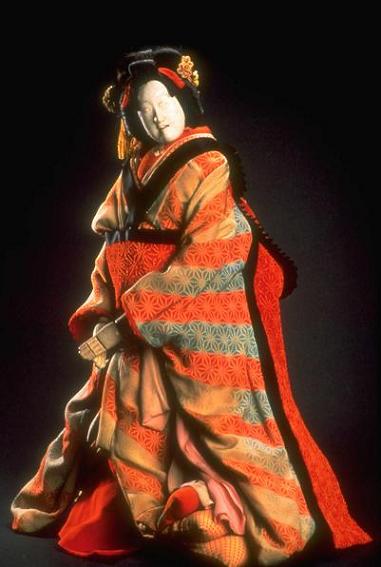| architecture |
| calligraphy |
| ceramics |
| clothing |
| comics |
| gardens |
| lacquerwork |
| literature |
| movies |
| music |
| painting |
| poetry |
| sculpture |
| tea ceremony |
| television |
| theatre |
| weaponry |
| thematic routes |
| timeline |
| the site |

|
a 1940s puppet |
context: theatre
Bunraku
Bunraku is Japan's puppet theatre: bunraku is its current name, but it was called joruri-ningyo it - only survives in one Osaka theatre. Plays formerly used large hand puppets (2.5ft), with puppeteers in trenches. From the 1730s, puppets became larger (3-4' high), and were manipulated with sticks by puppeteers standing around them. Major characters have three puppeteers: the main puppeteer operates the head, body and right arm; the other two do the left arm, and the feet. These puppeteers are dressed in black, and with black veils, only the master permitted to be bare-faced: black clothes are read by the audience as invisible in Japanese theatre generally. Puppets appeared as toys as early as the Ninth Century, and were soon used by itinerant entertainers, who were very low on the social scale. From the Sixteenth Century, one or more musicians were added, playing the samisen. The chanter is very important: he does all of the voices and narration (sometimes there is more than one chanter, but not generally).
In case you missed his page in the Kabuki section, the greatest Bunraku writer was...
